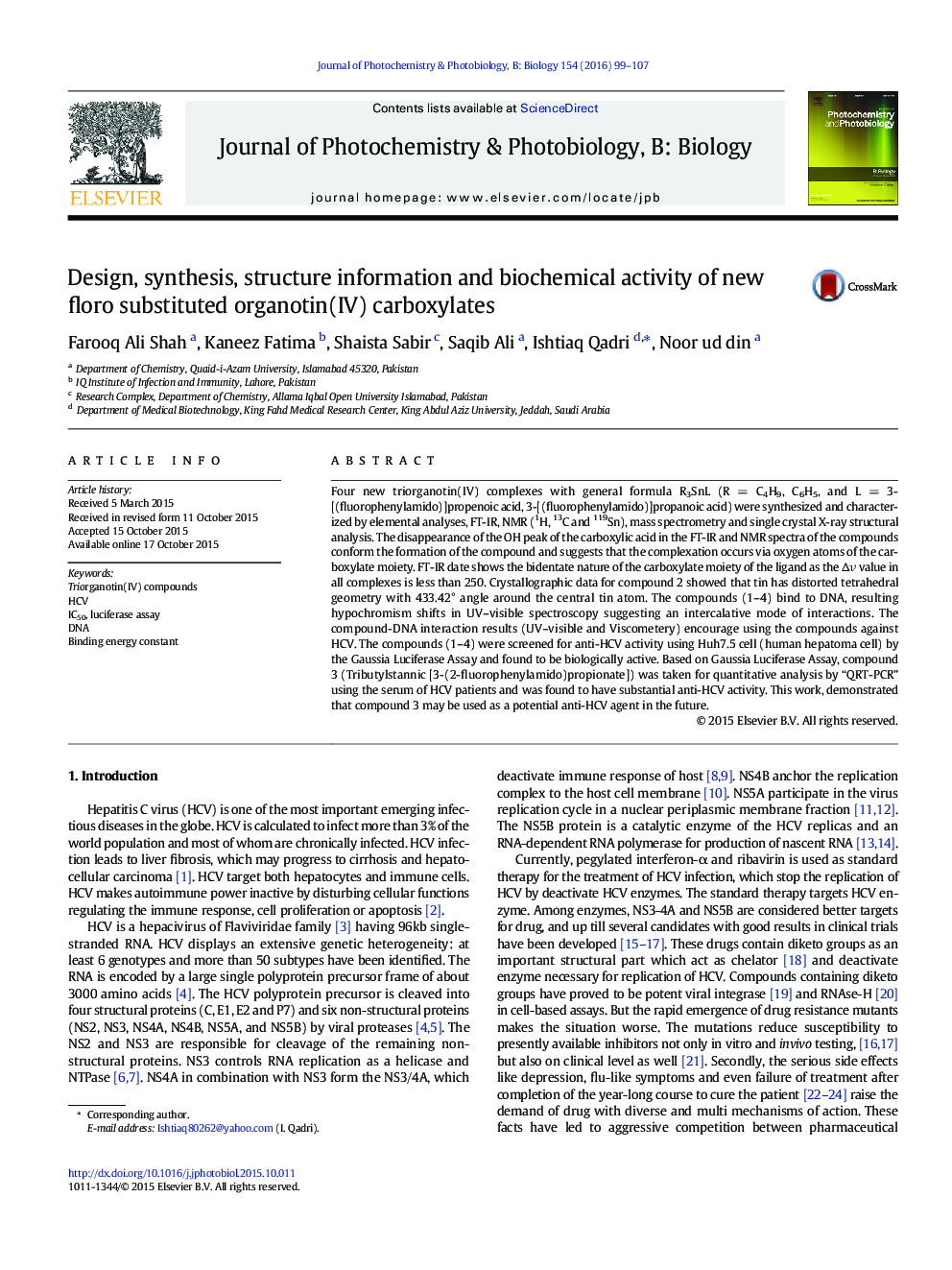| کد مقاله | کد نشریه | سال انتشار | مقاله انگلیسی | نسخه تمام متن |
|---|---|---|---|---|
| 29390 | 44380 | 2016 | 9 صفحه PDF | دانلود رایگان |

• Floro substituted triorganotin(IV) compounds are synthesized and characterized by single crystal XRD and spectroscopic methods.
• Anti-HCV activities of the compounds by using Huh7.5 cell and DNA–compound interaction studies are conducted.
• Anti-HCV activity is further supported by quantitative analysis using blood plasma of HCV patients.
Four new triorganotin(IV) complexes with general formula R3SnL (R = C4H9, C6H5, and L = 3-[(fluorophenylamido)]propenoic acid, 3-[(fluorophenylamido)]propanoic acid) were synthesized and characterized by elemental analyses, FT-IR, NMR (1H, 13C and 119Sn), mass spectrometry and single crystal X-ray structural analysis. The disappearance of the OH peak of the carboxylic acid in the FT-IR and NMR spectra of the compounds conform the formation of the compound and suggests that the complexation occurs via oxygen atoms of the carboxylate moiety. FT-IR date shows the bidentate nature of the carboxylate moiety of the ligand as the Δν value in all complexes is less than 250. Crystallographic data for compound 2 showed that tin has distorted tetrahedral geometry with 433.42° angle around the central tin atom. The compounds (1–4) bind to DNA, resulting hypochromism shifts in UV–visible spectroscopy suggesting an intercalative mode of interactions. The compound-DNA interaction results (UV–visible and Viscometery) encourage using the compounds against HCV. The compounds (1–4) were screened for anti-HCV activity using Huh7.5 cell (human hepatoma cell) by the Gaussia Luciferase Assay and found to be biologically active. Based on Gaussia Luciferase Assay, compound 3 (Tributylstannic [3-(2-fluorophenylamido)propionate]) was taken for quantitative analysis by “QRT-PCR” using the serum of HCV patients and was found to have substantial anti-HCV activity. This work, demonstrated that compound 3 may be used as a potential anti-HCV agent in the future.
The hepatitis C virus (HCV) infects approximately 200 million people worldwide. The process of discovery and development of antiviral drugs faces unique challenges. Organotin(IV) compounds are known for interaction with RNA. With this background, we synthesized triorganotin (IV) compounds and tested against HCV (with the predominant strain in Pakistan GT 3 recombinant NS3/4 protein and other cellular systems).Figure optionsDownload as PowerPoint slide
Journal: Journal of Photochemistry and Photobiology B: Biology - Volume 154, January 2016, Pages 99–107